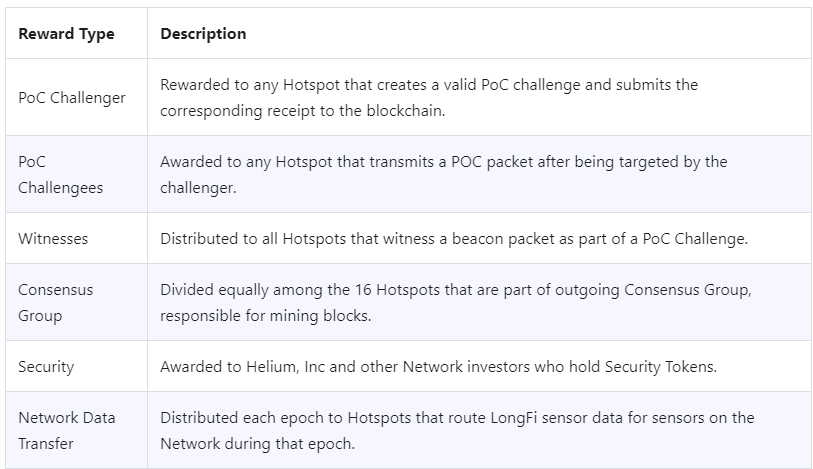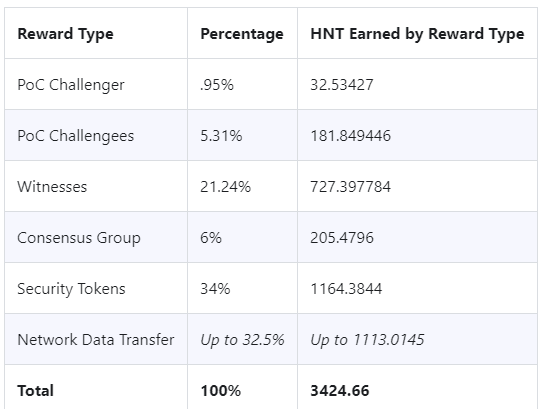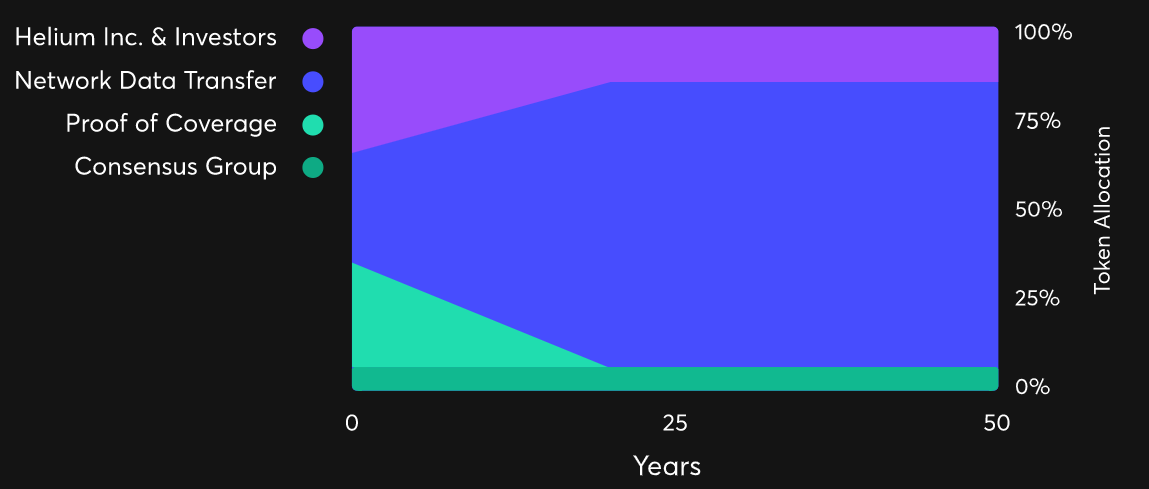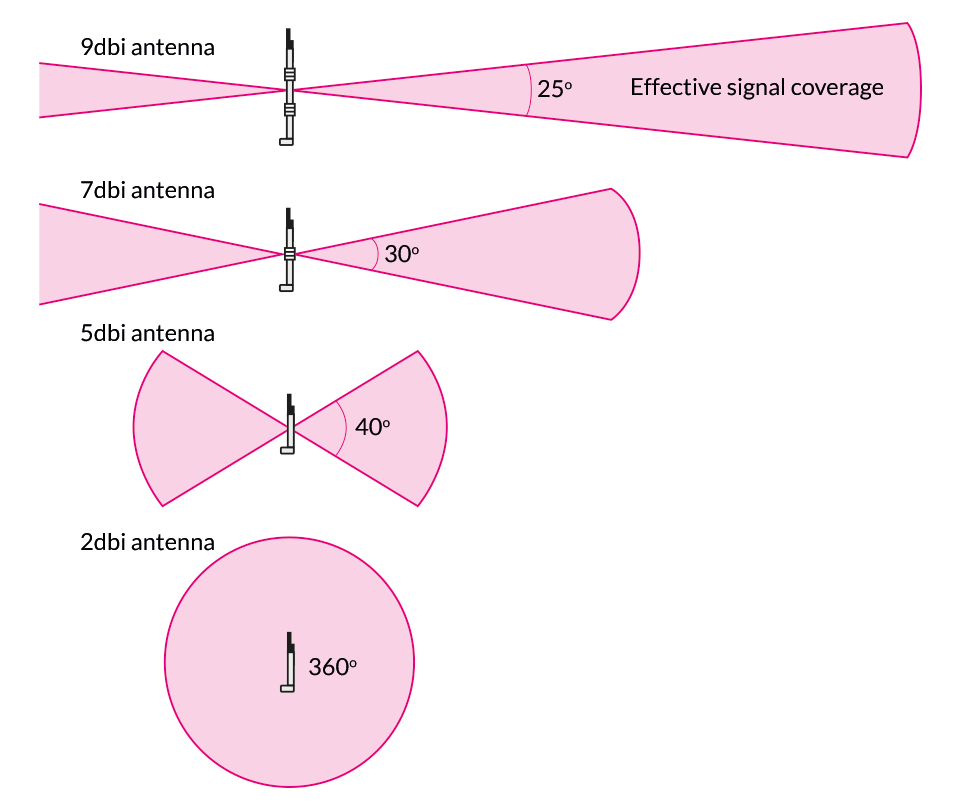The Helium Network. A guide for HNT mining
Konstantinos Pachtas
Meng Mechanical Engineering
Smart Home Energy Consultant
May 3, 2021
Introduction
Helium Network is a decentralized global network, that rewards users for providing coverage and growth. In this guide you will learn the basics for Helium Network, ΗΝΤ cryptocurrency and how you can mine it, and practices for a proper hotspot setup.
In 2013, Shawn Fanning, Amir Haleem, Sean Carey and Helium team, started their effort, to create the first global wireless peer-to-peer network. Finally in 29th of July 2019, Helium Network officialy launched. Today, there are thousands Hotspots in thousands of cities around the world and the growth rate is really impressive. You can explore the global map of Hotspots on Ηelium Explorer.
What is Helium Network?
Helium, as said, is a global decentralized network, providing public and wide range coverage for IoT devices. It's a network that simply uses your Internet connection and through RF can trasmit and receive data packages, connecting IoT devices in your area.
Which is the purpose?
The devices that this network is designed to support are mainly IoT devices, like dog collars sensors, electric scooters, water meters, gas meters, fire-security sensors, parking sensors, environmental monitoring sensors and IoT applications in general. Helium, is not intended to serve the normal use of Internet, as we know it today (streaming, social, communicating), but mainly devices that transfer small data packages. In the coming years, the Internet of Things and the number of such devices are expected to grow exponentially.
Network growth model - 'Τhe People's Network'
The innovation here is that there this network is not developed by a central telecom company. In this case the network is developed by the users who set up a hotspot in their home, providing coverage in their area. This is the main reason that it is also called 'The People's Network'. To motivate people to develop this network, the creators have chosen a reward model for users who are part of the development of the network.
Helium Blockchain
The project is based on its own blockchain technology. It's a blockchain that was created to promote the creation of decentralized public wireless networks. Ηelium Βlockchain is based on what we call Proof of Coverage (PoC) and rewards its users with ΗΝΤ cryptocurrency.
Helium cryptocurrency - HNT
The Helium Token (HNT) is the native cryptocurrency of Helium blockchain. The first HNT was minted in 29th of July 2019. ΗΝΤ are mined in a predefined way. There is a predetermined amount of ΗΝΤ that is produced each year and which is halved every two years (halving). For the first two years, this amount is 60,000,000 HNT/year. In August 2021, with the first halving in the history of ΗΝΤ, the annual quantity produced is reduced to 30,000,000 ΗΝΤ. In August 2023 it will be reduced to 15,000,000 HNT/year and this process will be repeated every two years until 2069, when the last ΗΝΤ will be produced out of a total of 223,000,000 HNT which will be the maximum supply.
*The total supply was originally planned to be 240,000,000 HNT, but due to some technical issues in the first year of operation instead of 60,000,000, 43,000,000 were produced, setting the maximum supply at 223,000,000 HNT.
** 2069 is the year, the last NEW HNT will be produced. However, due to burn and mint of DC's back to HNT there will always be HNT to mine.
HNT use
The ΗΝΤ token is used in Helium Ecosystem in these ways:
Μining: Hotspot owners are mining ΗΝΤ, while providing network coverage.
Use: Developers and businesses, use ΗΝΤ for trasmitting data through the network. They buy ΗΝΤ and they burn it, turning it in Data Credits (DC). Data Credits are used for paying the services of the Ηelium Network.
HNT trading
ΗΝΤ mining
HNT mining rewards
Εvery month a stantard quantity of HNT is mined (currently 5.000.000 ΗΝΤ/month) and distributed to the following categories:

The rewards are distributed to each category:

Rewards from Network Data Transfer are up to 32.50%. For the time being, the actual use of the network is very low, so the remaining rewards from this category are transfered to other reward categories.
This is how rewards work:
From the total 5.000.000 ΗΝΤ that are minted in monthly basis, 34% (1.700.000 HNT), goes to the investors. The remaining 66% is distributed as a percentage to the other categories and then divided by the number of hotspots participating in each category.
Example:
Suppose the total number of hotspots that exist and are online is 30,000 .
• If our hotspot is online, but completely isolated and there are no others around, it will only participate in the first category, as a PoC Challenger and will share the 47,500 HNT with the remaining 30,000 hotspots, ie 47,500 / 30,000 = 1.58 HNT / month.
• If there are other hotspots in the area and communicate with each other, then they will also win HNT from the PoC Challengees (265,000 HNT) and Witnesses (1,062,000 HNT) categories. In this case the corresponding amounts of HNT to be distributed will be distributed to the hotspots that participate respectively in each category and which will be less than 30,000, as some hotspots in isolation may not communicate with the rest.
• If we are lucky enough, we can be selected in the Consensus group category and receive a piece of the 300,000 HNT pie that is shared monthly in this category of rewards. This is something temporary, for this category today random hotspots are selected, but soon Validators will participate only. To become a Validator, one must invest 10,000 HNT.
• Finally, every online hotspot can claim rewards from the use of the network (Network Data Transfer). The fees for this category amount to up to 32.5% (1,625,000 HNT) of the total monthly quantity produced. Because at the moment, the use of the network is minimal (about 0.1%) these fees are divided into the other categories, increasing their percentages.
Conclusion
The fees of hotspots for the development of the network in HNT decrease as the number of hotspots increases. They are also reduced by 50% on each halving, ie every two years. But in the future there will be rewards from using the network. The logic of the creators is to distribute the largest percentage of the revenue from the use of the network to the users.
HNT distribution long term plan
The vision of Helium Network is to initially promote network development and PoC rewards in order to motivate global network development. However, as the years go by, as we see in the table below, the rewards for the PoC will decrease as well as the rewards of the investors and the percentage of rewards from the use of the network will increase:

How do I start mining HNT?
To start mining HNT, one must purchase and install a hotspot miner in its place. You also need an internet connection and a power supply. Activation of the hotspot is done through an application on a smart phone. Here is all relevant information and what you need to know about HNT mining. The important thing compared to other forms of mining is the power consumption, which is extremely low, since hotspots are low power devices (5-15W).
What equipment do I need?
The first step is to order the relevant equipment, a hotspot miner and possibly an antenna. It is a step for which you should definitely arm yourself with patience, as the huge demand, the thousands of pre-ordered hotspots, combined with the global shortage of electronic materials and components, have caused long delays in the delivery of hotspots.
Hotspot miners
.png)
.png)
.png)
The suppliers available for hotspot purchase today that have been officially approved by the Helium Network are the following companies:
- RAK Wireless
- Nebra
- Bobcat
- Linxdot (Feel free to use code 'HeliumGR' to get 3% discount)
- Syncrob.it
- Controllino
Attention: When ordering we must be careful in choosing the appropriate frequency. For installation in the European Union we choose the frequency 868MHz in hotspot and antenna.
Other companies are expected to be added to the list of approved suppliers by Helium Network soon.
.png)
.png)
Installation
Understanding the installation requirements is critical to the proper design and therefore the performance of the hotspot miner. The hotspot is connected to the power supply and to our existing Internet connection either via Wi-fi or Ethernet cable (recommended). Through the antenna connected to the hotspot, it communicates by transmitting radio waves at 868MHz with the other hotspots within its range and any devices that make use of the network. In order for the text to be understood by the average reader, we will try, without wanting to delve too deeply into the science of RF signals, to analyze the main factors that affect the scope of your hotspot, and therefore the possible rewards.
Location
The choice of the appropriate location is the most important factor in combination with the height of the antenna, from the ground level. Obstacles such as hills, mountains or even buildings block the signal. The technology of the signal. The choice of the appropriate location is the most important factor in combination with the height of the antenna, from the ground level. Obstacles such as hills, mountains or even buildings block the signal. The signal technology allows it to be transmitted over long distances, as long as there is clear visual contact with the target (Clear line of sight).
Elevation
Antenna elevation is highly correlated with the previous factor. The general rule is: the higher, the better. Areas with altitude and panoramic views, increase the range of our signal and are clearly better than a spot at sea level. Similarly, if we place a hotspot in a building within the city on the 1st floor, which building is surrounded by other tall buildings around and has no view at all, it makes sense that our hotspot does not have good coverage. An installation of the antenna on the roof of the building will be clearly more efficient.
Αntenna
.png)
.png)
The choice of antenna is another factor that affects the performance of the hotspot. It is emphasized again that the location and the installation altitude of the antenna are more critical than its type. The main feature of the antennas is the decibels (db) and specifically the dbi (db isotropic). The higher the dbi the stronger our signal. But as we can see from the following figures, the increased dbi are not always better, it all depends on the location of the antenna and the geomorphology of the area. In a cityscape like a big city, a 3-6dbi antenna will in most cases be the best choice. The signal from an antenna with a lot of dbi may travel farther, but it may lose some nearby hotspots.


Density
There are some rules to avoid overcrowding hotspots in one area and inadequate coverage in others. The main rule is that two hotspots must be more than 300 m apart to witness each other. The Helium Place tool also helps us in the design of the placement, where placing a hotspot on the map, shows us this red zone in which it is recommended to avoid the installation of the hotspot. Otherwise the hotspots density algorithm automatically reduces the reward scale of nearby hotspots. Specifically, the surface of the whole earth is divided into hexagons (hex) and according to this algorithm, when there are more than one limit of hotspots in a hexagon, their reward scale is reduced.
So while we seek to communicate with as many hotspots as possible, we should have in mind that being very close to others, will result in reduced rewards. You can find more information on how density affects rewards here.
Good practices to optimize performance
In summary, to optimize our performance, it is recommended that we follow the following practices
• Suitable location selection. It is recommended to choose an area with a good view, with clear Line of Sight with the other hotspots, without obstacles.
• Antenna mounting elevation. It is recommended to select an external fiberglass antenna and place it at the highest possible point of the installation space. Neither the antenna included in indoor hotspot miners, nor the indoor hotspots are suitable for outdoor use and weather exposure.
• Distance of the RF cable between the antenna and the hotspot. It is recommended to choose a high quality cable (at least LMR-400) and avoid long cable runs due to losses. A 24-meter-long LMR-400 cable run is enough to reduce our signal performance in half. The losses will be about 3.3dB, which due to the logarithmic nature of dB as a size, translates into signal loss of 50%!
• The best practice is to place the hotspot as close to the antenna as possible . If we take into account that the antenna must be installed at the highest point, usually on the top of the building, then this means that the hotspot must be installed outside. This can be achieved either by supplying an outdoor hotspot miner suitable for outdoor use or by placing the indoor miner outside using a special waterproof box such as the one shown in the photo below.
• Outdoor hotspot miner,
suitable for direct external use is available only from Nebra (at the moment the company has informed that it does not accept other orders).

 EN
EN
 Ελληνικά
Ελληνικά English
English
.png)


 Login
Login